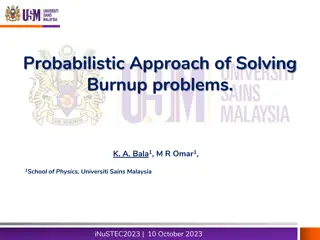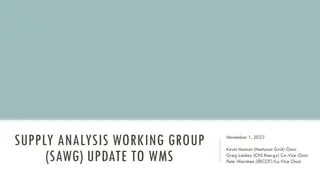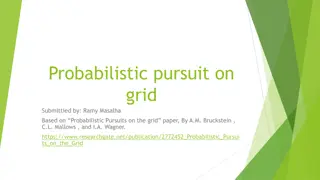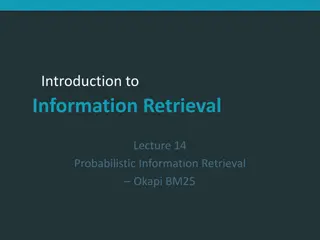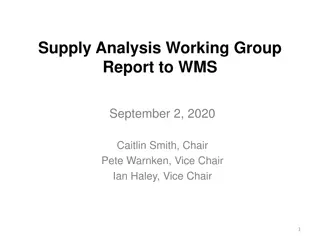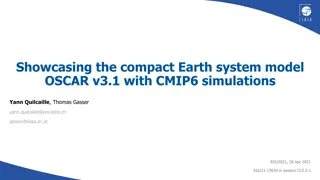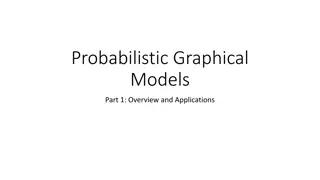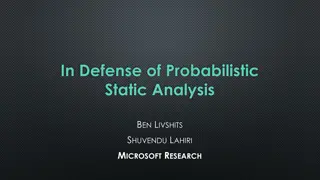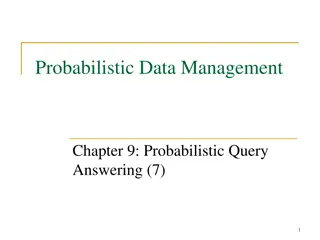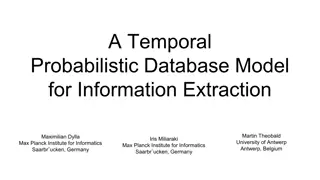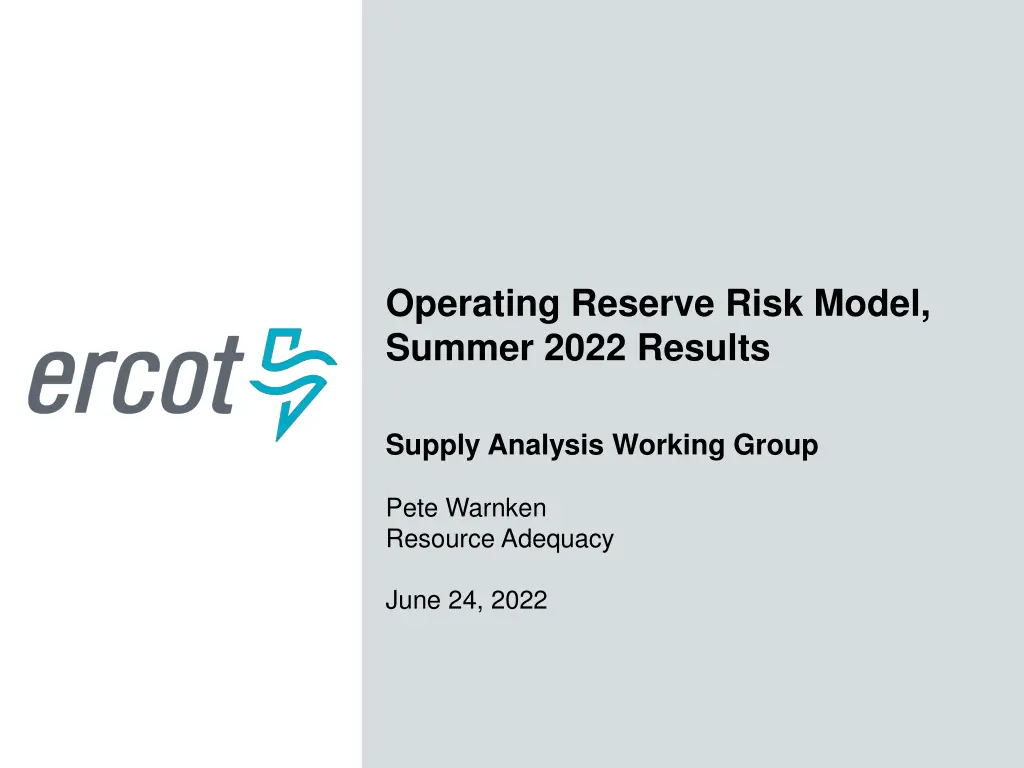
Summer 2022 Operating Reserve Analysis Results
"Explore the findings from the Operating Reserve Risk Model for Summer 2022, focusing on Capacity Available for Operating Reserves, EEA Risk Measure, Model Updates, Model Changes, and Simulation Results. Discover the insights into resource adequacy, potential risks, and updated supply schedules in the energy sector." (Characters: 298)
Download Presentation

Please find below an Image/Link to download the presentation.
The content on the website is provided AS IS for your information and personal use only. It may not be sold, licensed, or shared on other websites without obtaining consent from the author. If you encounter any issues during the download, it is possible that the publisher has removed the file from their server.
You are allowed to download the files provided on this website for personal or commercial use, subject to the condition that they are used lawfully. All files are the property of their respective owners.
The content on the website is provided AS IS for your information and personal use only. It may not be sold, licensed, or shared on other websites without obtaining consent from the author.
E N D
Presentation Transcript
Operating Reserve Risk Model, Summer 2022 Results Supply Analysis Working Group Pete Warnken Resource Adequacy June 24, 2022
EEA Risk Measure: Capacity Available for Operating Reserves (CAFOR) CAFOR Formula: = Seasonal Maximum Expected Resource Generation Capability Demand Uses of Reserves* + EEA Resources if CAFOR < 2,300 MW * Uses of Reserves: Higher-than-expected peak demand Thermal unit outages Renewable generation below expected values 2 PUBLIC
Model Updates PUBLIC
Model Changes Reflects resources in the May 2022 SARA report Exception is that the WA Parish Unit 8 (610 MW summer rating) removed in response to ERCOT receipt of an extended outage Notice of Suspension of Operations form Developed peak demand probability distributions for all hours, and included inter-hour correlations Previous approach used a probability distribution for HE 1700 only, and applied shaping factors to get values for the other hours that are proportional to the load forecast values 4 PUBLIC
Model Changes, continued Incremental price-responsive demand reduction supply schedule updated based on 2021 Annual Report of Demand Response in the ERCOT Region (December 2021) Overall lower amounts than the 2020 report, but new schedule triggers amounts at a lower peak demand threshold New Schedule Old Schedule Load Forecast Distribution Value (HE13) PRD SELECTIONS PRD Amount Percentile Demand MW 0% 10% 20% 30% 40% 50% 60% 70% 80% 90% 100% PRD MW 1,244 1,658 2,073 2,487 Percentile 65,069 73,261 74,635 75,612 76,421 77,144 77,826 78,503 79,216 80,053 82,055 - - - - - 415 829 0 0 <40% 74,466 75,708 76,647 77,709 79,177 80,738 677 875 40%-50% 50%-60% 1,072 1,270 1,467 1,665 60%-70% 70%-80% 80%-90% >90% 5 PUBLIC
Simulation Results PUBLIC
Capacity for Operating Reserves Outcome Distribution, HE 5:00 PM (10,000 Trial Simulation) Energy Emergency Alert outcomes, N = 419 Simulation Outcome Range: 55,729 MW to -6,674 MW Most extreme scenario for 2022 Summer SARA: -7,756 MW 7 PUBLIC
Capacity for Operating Reserves Outcome Distribution, HE 7:00 PM (10,000 Trial Simulation) Energy Emergency Alert outcomes (N = 1,049) Simulation Outcome Range: 43,611 MW to -10,667 MW 8 PUBLIC
Hourly Risk Profile, Summer 2022 Hourly Risk Profile, Probability of EEAs (%) HE 1:00 PM HE 2:00 PM HE 3:00 PM HE 4:00 PM HE 5:00 PM HE 6:00 PM HE 7:00 PM HE 8:00 PM Probability of Reserves being equal to or less than the 2,300 MW EEA1 threshold Probability of Reserves being equal to or less than the 1,750 MW EEA2 threshold Probability of Reserves being equal to or less than the 1,430 MW EEA3 threshold Probability of Reserves being equal to or less than the 1,000 MW load shed threshold 0.1 0.3 1.1 2.2 4.2 6.6 10.5 11.5 0.0 0.1 0.4 0.9 2.1 3.7 6.6 6.9 0.0 0.0 0.0 0.2 0.6 1.2 2.4 2.4 0.0 0.0 0.0 0.1 0.5 1.0 2.1 2.0 Increased solar penetration shifting highest- risk hours for reserve capacity shortages to later hours 9 PUBLIC
Hourly Risk Profiles, Summer 2022 vs. 2021 Hourly Risk Profile, Probability of EEAs (%) HE 1:00 PM HE 2:00 PM HE 3:00 PM HE 4:00 PM HE 5:00 PM HE 6:00 PM HE 7:00 PM HE 8:00 PM Probability of Reserves being equal to or less than the 2,300 MW EEA1 threshold Probability of Reserves being equal to or less than the 1,750 MW EEA2 threshold Probability of Reserves being equal to or less than the 1,430 MW EEA3 threshold Probability of Reserves being equal to or less than the 1,000 MW load shed threshold 0.1 0.3 1.1 2.2 4.2 6.6 10.5 11.5 0.0 0.1 0.4 0.9 2.1 3.7 6.6 6.9 0.0 0.0 0.0 0.2 0.6 1.2 2.4 2.4 0.0 0.0 0.0 0.1 0.5 1.0 2.1 2.0 10 PUBLIC


